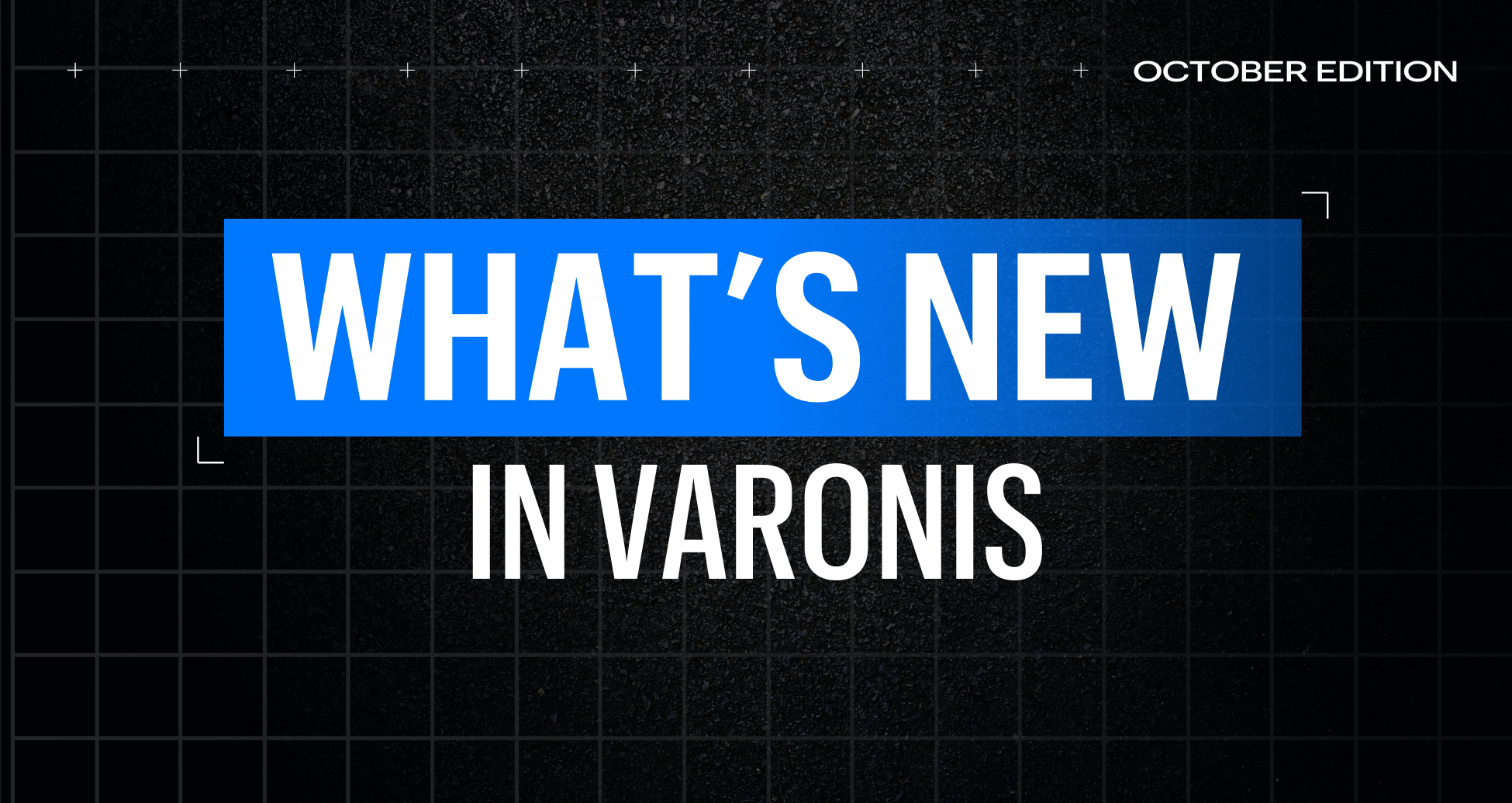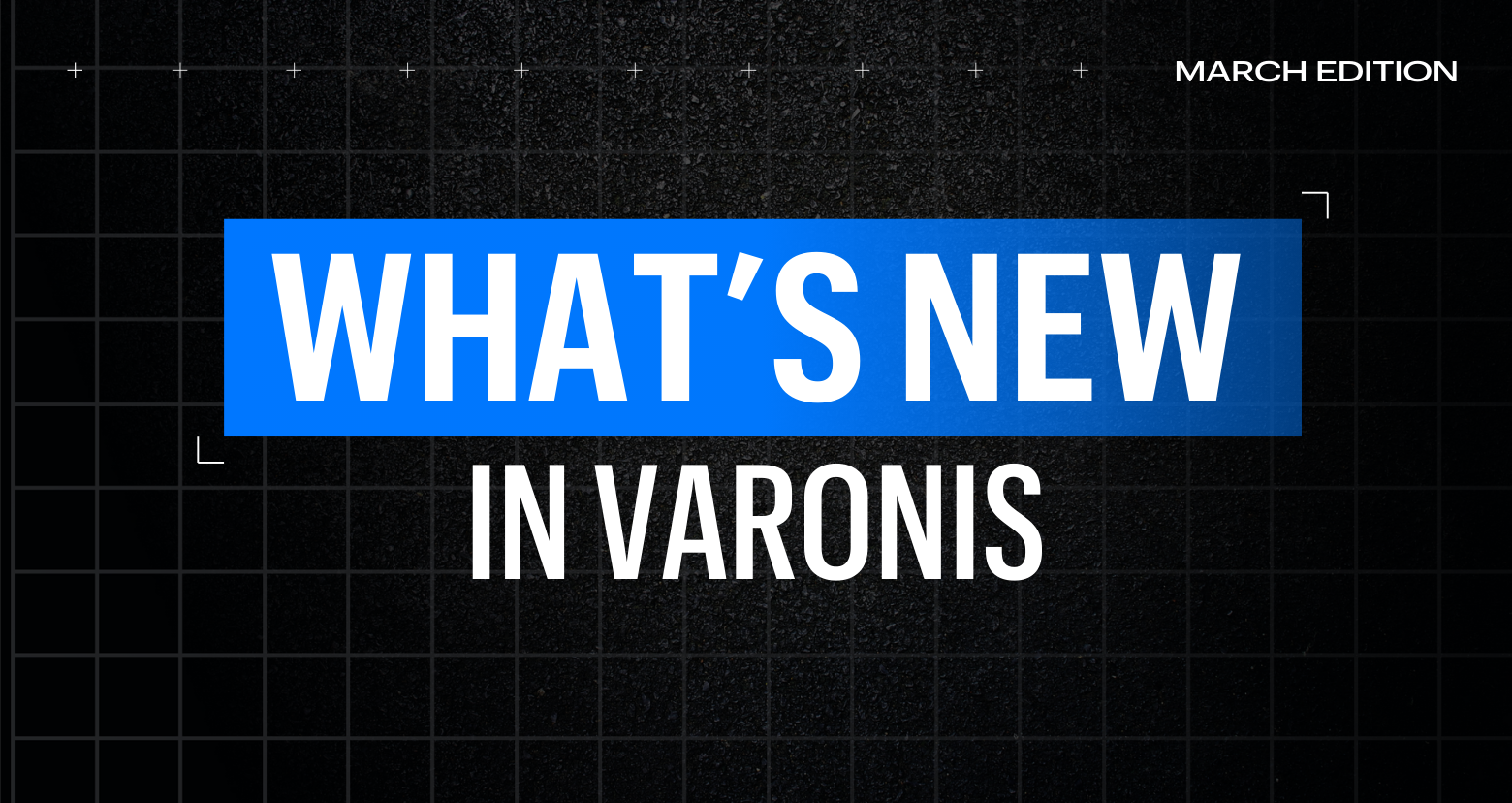This month, Varonis released new updates to help organizations secure critical cloud resources, simplify effective permissions analysis in AWS, remediate sensitive data exposure, streamline compliance operations, and more.
Our new functionality includes:
- Google Cloud support
- Automated data masking
- AWS access graph
- Expanded AWS automated remediation policies
- Azure Database support
- Data Discovery Investigation Dashboard
- Google Organizational Unit support
- Updated MDDR communications
Discover what’s new in this quick 4-minute video, or continue reading for all the details.
Google Cloud support
With Varonis for Google Cloud, organizations can now secure critical data and resources in Google Cloud Storage and BigQuery at scale with Varonis’ leading Data Security platform.
This integration provides security teams with the ability to:
- Identify sensitive data in hard-to-find places
- Stop attackers and rogue insiders
- Limit data exposure
- Automatically mask sensitive data
- Improve your Google Cloud data security posture
With these capabilities, organizations can ensure that their Google Cloud and multi-cloud environments are consistently monitored and secured at scale.
Read our blog to learn more.
Discover, classify, and secure critical Google Cloud data at scale.
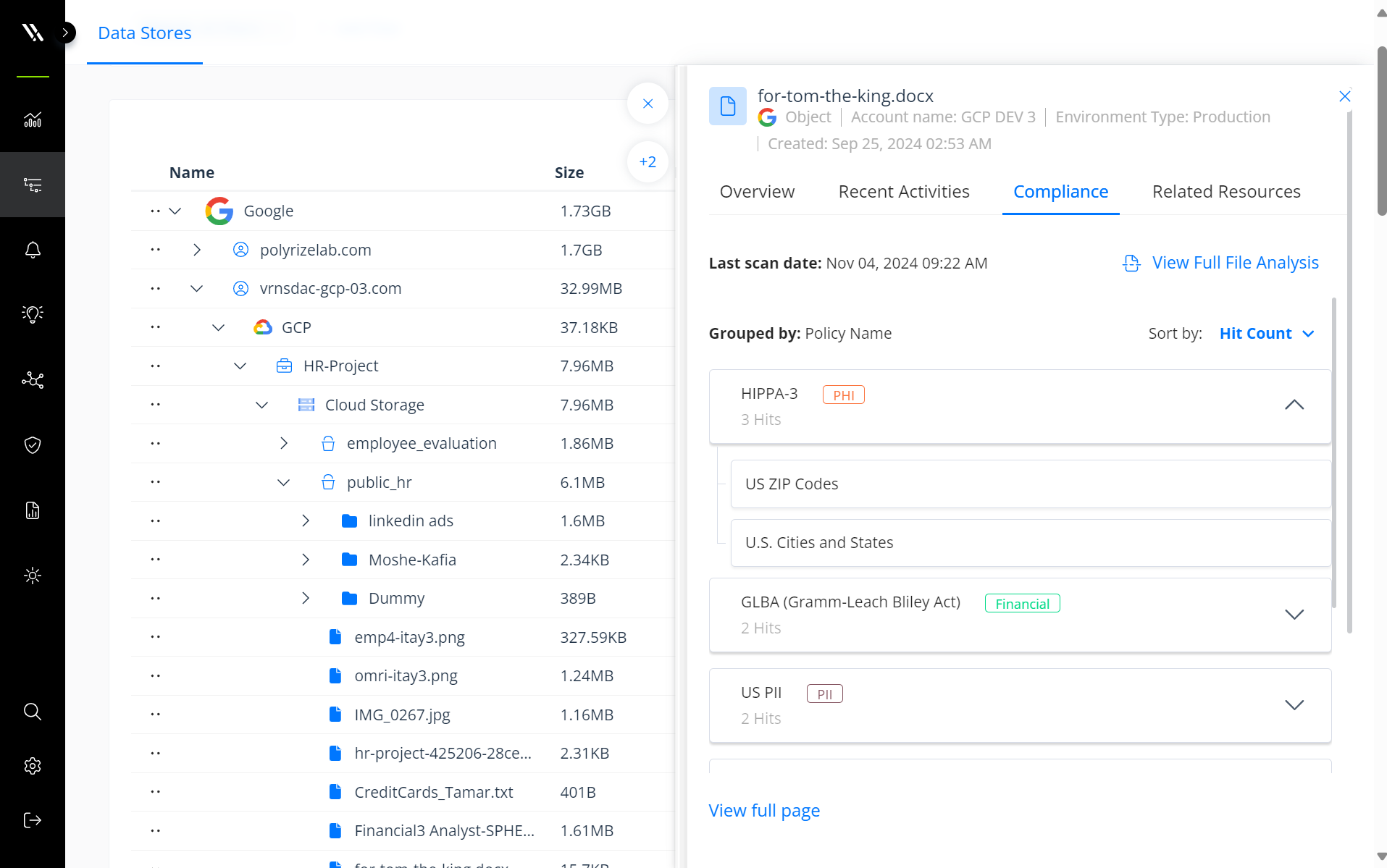
Discover, classify, and secure critical Google Cloud data at scale.
Automated data masking
Varonis now supports automated database masking in AWS Redshift, Google BigQuery, and Snowflake. These new capabilities enable organizations to:
- Discover database columns with unmasked sensitive data
- Investigate bi-directional effective permissions based on masking for Snowflake
- Automatically apply dynamic data masks on columns with sensitive data
- Easily remove Varonis-applied data masks
With this update, admins can automatically protect sensitive data like PII, PCI, and PHI. Masking policies can be configured on a role-by-role basis to enforce least privilege at scale and ensure only the right people have access to sensitive data.
Automatically enforce database masking policies with Varonis.

Automatically enforce database masking policies with Varonis.
AWS access graph
Varonis for AWS’s access graph gives security teams a visual map of effective permissions for every identity, account, group, and role. Security teams can easily analyze complex AWS access policies, identify overexposed sensitive data, and proactively block data pathways.
The access graph builds on Varonis’ existing in-depth view of AWS effective permissions, normalizing permissions into an easy-to-understand CRUDS model.
Read our blog to learn more.
Visualize the effective permissions of all identities in AWS and what policies affect their permissions.

Visualize the effective permissions of all identities in AWS and what policies affect their permissions.
New AWS automated remediation policies
Varonis has expanded its AWS automated remediation policies to enable security teams to block pathways to data proactively and reduce exposure in AWS.
The new remediation policies include:
- Remove stale policy assignments from users and roles
- Remove stale group memberships from users
- Restrict trust relationships (external role access)
- Delete unused customer-managed policies
Automatically and continuously revoke stale policy assignments.

Automatically and continuously revoke stale policy assignments.
Azure database support
Varonis’ latest update extends its industry-leading cloud data security capabilities to managed Azure databases, including MSSQL, CosmosDB, MongoDB, MySQL, PostgreSQL, and numerous unmanaged databases.
With Varonis for Azure databases, security teams can:
- Discover and classify sensitive data
- Identify risks
- Monitor activity and detect threats
- Automatically remediate misconfigurations and security risks
Read our blog to learn more.
Automatically discover and classify sensitive data stored across structured and unstructured Azure resources and view results in an intuitive tree format.

Automatically discover and classify sensitive data stored across structured and unstructured Azure resources and view results in an intuitive tree format.
Data Discovery Investigation Dashboard
The Data Discovery Investigation Dashboard empowers organizations to categorize, monitor, and report on data according to discovery policies like GDPR, HIPAA, and SOX and classification categories such as PII, PHI, and PCI.
With this dashboard, security and compliance teams can easily identify, prioritize, and remediate compliance and sensitive data risks, including:
- Data residency violations and out-of-location data
- Over-permissive access
- Overexposed sensitive data
Track and investigate data discovery and classification results by sensitive data category or policy.
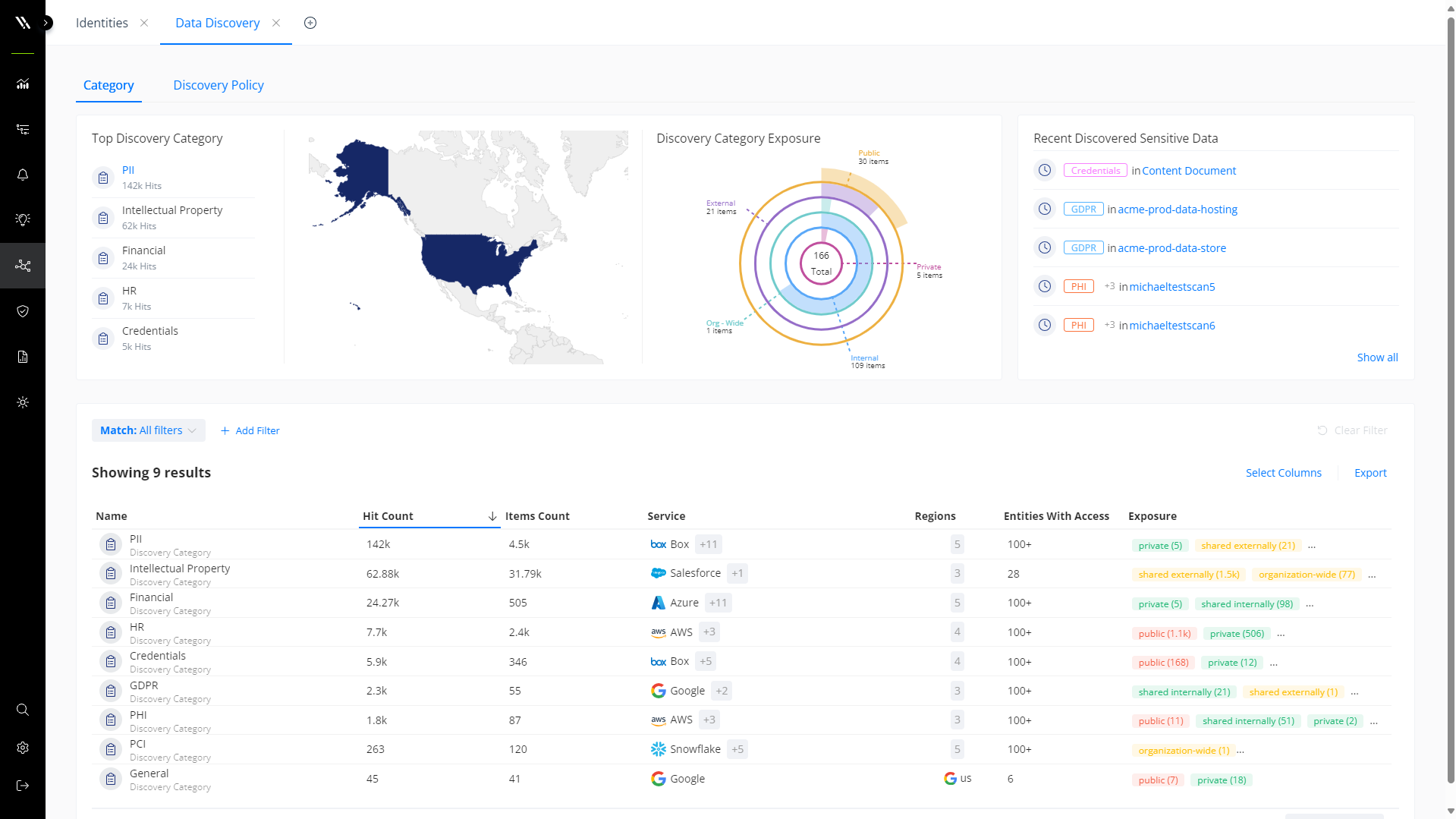
Track and investigate data discovery and classification results by sensitive data category or policy.
Google Organizational Unit support
Varonis now supports integrating and monitoring specific Google Organizational Units rather than the entire Google Workspace environment. This allows security and compliance teams to focus on the data they need, providing a more targeted and granular view of user activity and data management, ensuring that their most critical data is secured.
Integrate and monitor specific Google Organizational Units.
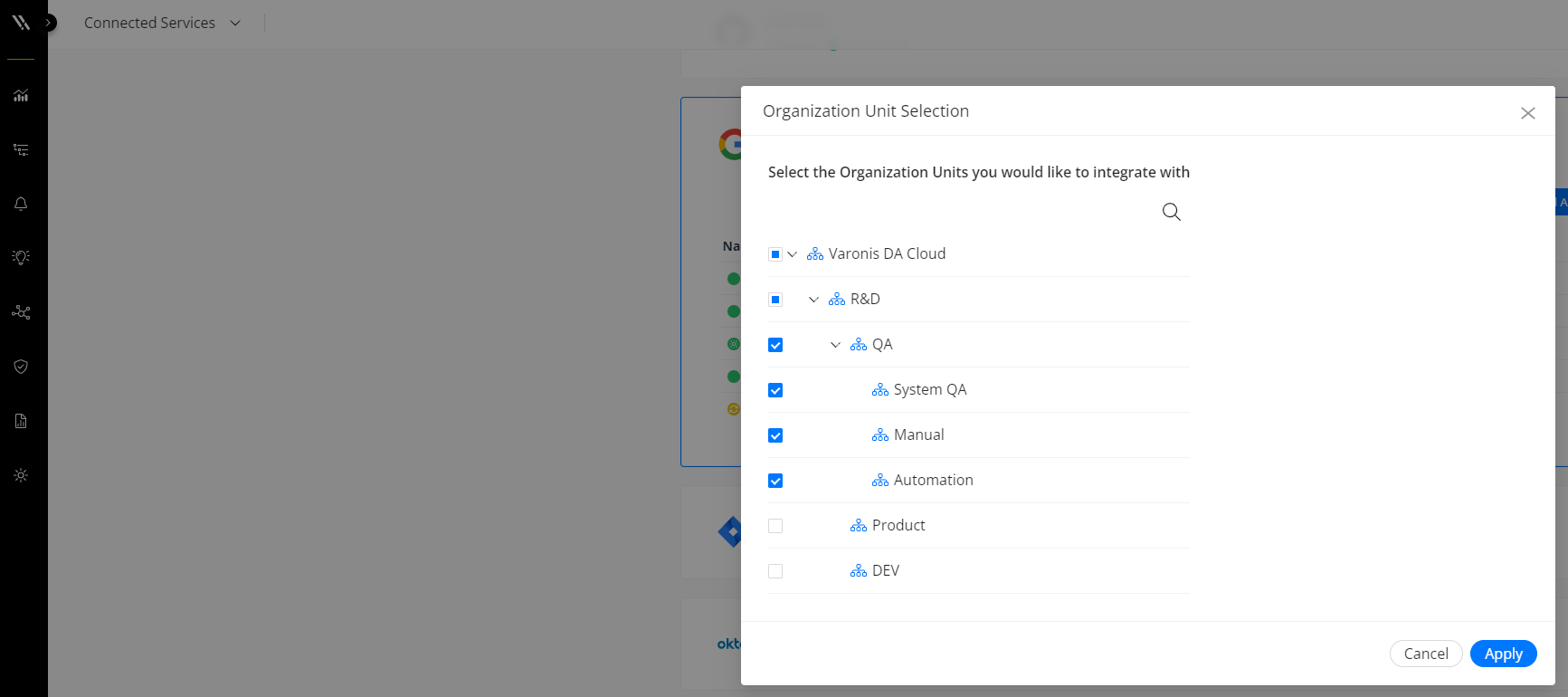
Integrate and monitor specific Google Organizational Units.
Updated MDDR communications
Varonis has updated its MDDR communications and escalation process. When the MDDR team identifies an imminent threat or significant risk to data, they will now escalate cases by calling directly from a single phone number.
Note: The MDDR phone line does not accept inbound calls. If you require urgent assistance for an investigation, please go to help.varonis.com, click the “Varonis SaaS” dropdown, and submit an MDDR request.
Keep up with the latest Varonis product releases.
Varonis’ offerings move fast! Discover product updates you may have missed on our blog.
For more information, including release notes, customer training, and how-to videos, visit the Varonis Community.
See Varonis in action and request a demo today.
What should I do now?
Below are three ways you can continue your journey to reduce data risk at your company:
Schedule a demo with us to see Varonis in action. We'll personalize the session to your org's data security needs and answer any questions.
See a sample of our Data Risk Assessment and learn the risks that could be lingering in your environment. Varonis' DRA is completely free and offers a clear path to automated remediation.
Follow us on LinkedIn, YouTube, and X (Twitter) for bite-sized insights on all things data security, including DSPM, threat detection, AI security, and more.



